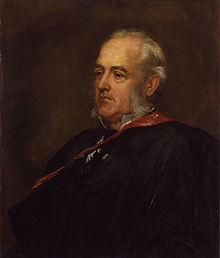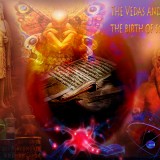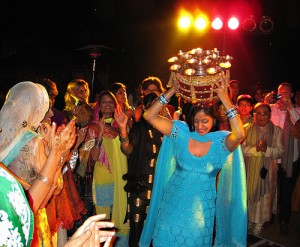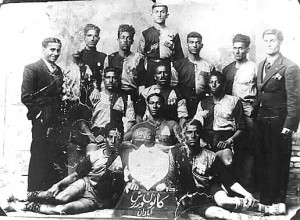Mahatma Gandhi is often praised as the man who defeated British imperialism with non-violent agitation. It is still a delicate and unfashionable thing to discuss his mistakes and failures, a criticism hitherto mostly confined to Communist and Hindutva publications. But at this distance in time, we shouldn’t be inhibited by a taboo on criticizing official India’s patron saint.
Gandhiji’s mistakes
 Without attempting to approach completeness, we may sum up as Gandhi’s biggest political failures the following events:
Without attempting to approach completeness, we may sum up as Gandhi’s biggest political failures the following events:
(1) Recruiting Indian soldiers for the British war effort in 1914-18 without setting any conditions, in the vain hope that this unilateral gift to Britain would bring about sufficient goodwill in London for conceding to India the status of a self-ruling dominion within the British Empire, on a par with Canada or Australia. While it was already off line for a pacifist to cooperate in such a wasteful war (as contrasted with World War 2, to both sides a kind of holy war where fundamental principles were at stake), Gandhiji’s stance was also a glaring failure of political skill, since he neglected to extract any tangible gains for India in return for the thousands of Indian lives which he sacrificed to British imperial interests.
(2) Committing the mobilisation potential of the freedom movement to the Khil’fat agitation in 1920-22, again a non-negotiated unilateral gift. The Khilafat movement was a tragicomical mistake, aiming at the restoration of the Ottoman Caliphate against which the Arabs had risen in revolt and which the Turks were dissolving, a process completed with the final abolition of the institution of the Caliphate in 1924. It was a purely retrograde and reactionary movement, and more importantly for Indian nationalism, it was an intrinsically anti-nationalist movement pitting specifically Islamic interests against secular and non-Muslim interests. Gandhi made the mistake of hubris by thinking he could reconcile Khilafatism and Indian nationalism, and he also offended his Muslim allies (who didn’t share his commitment to non-violence) by calling off the agitation when it turned violent. The result was even more violence, with massive Hindu-Muslim riots replacing the limited instances of anti-British attacks, just as many level-headed freedom fighters had predicted. Gandhiji failed to take the Khilafat movement seriously whether at the level of principle or of practical politics, and substituted his own imagined and idealized reading of the Khilafat doctrine for reality.
 (3) His autocratic decision to call off the mass agitation for complete independence in 1931, imposed upon his mass following and his close lieutenants against their wishes and better judgment, in exchange for a few puny British concessions falling far short of the movement’s demands. His reputation abroad didn’t suffer, but to informed observers, he had thrown away his aura as an idealist leader standing above petty politics; the Pact between Gandhi and Viceroy Lord Irwin amounted to the sacrifice of a high national goal in favour of a petty rise in status for the Congress. Also, every delay in the declaration of Independence gave the emerging separatist forces the time to organize and to strengthen their position.
(3) His autocratic decision to call off the mass agitation for complete independence in 1931, imposed upon his mass following and his close lieutenants against their wishes and better judgment, in exchange for a few puny British concessions falling far short of the movement’s demands. His reputation abroad didn’t suffer, but to informed observers, he had thrown away his aura as an idealist leader standing above petty politics; the Pact between Gandhi and Viceroy Lord Irwin amounted to the sacrifice of a high national goal in favour of a petty rise in status for the Congress. Also, every delay in the declaration of Independence gave the emerging separatist forces the time to organize and to strengthen their position.
(4) Taking a confused and wavering position vis-vis India’s involvement in World War 2. His initial refusal to commit India to the war effort could have been justified on grounds of pacifist principle as well as national pride (the Viceroy had committed India without consulting the native leadership), but it was a failure because his followers weren’t following. Indian recruits and business suppliers of the Army eagerly joined hands with the British rulers, thus sidelining Gandhi into political irrelevance. By contrast, the Muslim League greatly improved its bargaining positions by joining the war effort, an effect not counterbalanced by the small Hindu Mahasabha’s similar strategy. The pro-Partition case which the Muslim League advocated was bolstered while Gandhi’s opposition to the imminent Partition was badly weakened. Gandhi was humiliated by his impotence before the degeneration of his “Quit India” agitation into violence and by ultimately having to come around to a collaborationist position himself.
 (5) Taking a confused and wavering position vis-vis the Partition plan, including false promises to the Hindus of the designated Pakistani areas to prevent Partition or at least to prevent their violent expulsion. He chose not to use his weapon of a fast unto death to force Mohammed Ali Jinnah into backing down from Partition, a move which cast doubt on the much-touted bravery of all his other fasts “unto death” performed to pressurize more malleable opponents. If acquiescing in the Partition could still be justified as a matter of inevitability, there was no excuse for his insistence on half measures, viz. his rejecting plans for an organized exchange of population, certainly a lesser evil when compared to the bloody religious cleansing that actually took place. Gentle surgeons make stinking wounds.
(5) Taking a confused and wavering position vis-vis the Partition plan, including false promises to the Hindus of the designated Pakistani areas to prevent Partition or at least to prevent their violent expulsion. He chose not to use his weapon of a fast unto death to force Mohammed Ali Jinnah into backing down from Partition, a move which cast doubt on the much-touted bravery of all his other fasts “unto death” performed to pressurize more malleable opponents. If acquiescing in the Partition could still be justified as a matter of inevitability, there was no excuse for his insistence on half measures, viz. his rejecting plans for an organized exchange of population, certainly a lesser evil when compared to the bloody religious cleansing that actually took place. Gentle surgeons make stinking wounds.
(6) Refusing to acknowledge that Pakistan had become an enemy state after its invasion of Kashmir, by undertaking a fast unto death in order to force the Indian government to pay Pakistan 55 crore rupees from the British-Indian treasury. Pakistan was entitled to this money, but given its aggression, it would have been normal to set the termination of its aggression, including the withdrawal of its invading troops, as a condition for the payment. Indeed, that would have been a sterling contribution to the cause of enduring peace, saving the lives of the many thousands who fell in subsequent decades because of the festering wound which Kashmir has remained under partial Pakistani occupation. Coming on top of Gandhi’s abandonment of the Hindus trapped in Pakistan in August 1947, it was this pro-Pakistani demand, as well as his use of his choice moral weapon (left unused to save India’s unity or the persecuted Hindus in Pakistan) in the service of an enemy state’s treasury, that angered a few Hindu activists to the point of plotting his murder.
Problems with pacifism
 The common denominator in all these costly mistakes was a lack of realism. Gandhi refused to see the realities of human nature; of Islamic doctrine with its ambition of domination; of the modern mentality with its resentment of autocratic impositions; of people’s daily needs making them willing to collaborate with the rulers in exchange for career and business opportunities; of the nationalism of the Hindus who would oppose the partition of their Motherland tooth and nail; of the nature of the Pakistani state as intrinsically anti-India and anti-Hindu.
The common denominator in all these costly mistakes was a lack of realism. Gandhi refused to see the realities of human nature; of Islamic doctrine with its ambition of domination; of the modern mentality with its resentment of autocratic impositions; of people’s daily needs making them willing to collaborate with the rulers in exchange for career and business opportunities; of the nationalism of the Hindus who would oppose the partition of their Motherland tooth and nail; of the nature of the Pakistani state as intrinsically anti-India and anti-Hindu.
In most of these cases, Gandhi’s mistake was not his pacifism per se. In the case of his recruiting efforts for World War 1, there wasn’t even any pacifism involved, but loyalty to the Empire whether in peace or in war. The Khilafat pogroms revealed one of the real problems with his pacifism: all while riding a high horse and imposing strict conformity with the pacifist principle, he indirectly provoked far more violence than was in his power to control. Other leaders of the freedom movement, such as Annie Besant and Lala Lajpat Rai, had warned him that he was playing with fire, but he preferred to obey his suprarational “inner voice”.
The fundamental problem with Gandhi’s pacifism, not in the initial stages but when he had become the world-famous leader of India’s freedom movement (1920-47), was his increasing extremism. All sense of proportion had vanished when he advocated non-violence not as a technique of moral pressure by a weaker on a stronger party, but as a form of masochistic surrender. Elsewhere (Elst: Gandhi and Godse, Voice of India, Delhi 2001, p.120-121) I have cited four instances of his advice to the victims of communal violence which is simply breathtaking for its callousness in the face of human suffering. Two more instances follow.
 During his prayer meeting on 1 May 1947, he prepared the Hindus and Sikhs for the anticipated massacres of their kind in the upcoming state of Pakistan with these words: “I would tell the Hindus to face death cheerfully if the Muslims are out to kill them. I would be a real sinner if after being stabbed I wished in my last moment that my son should seek revenge. I must die without rancour. (*) You may turn round and ask whether all Hindus and all Sikhs should die. Yes, I would say. Such martyrdom will not be in vain.” (Collected Works of Mahatma Gandhi, vol.LXXXVII, p.394-5) It is left unexplained what purpose would be served by this senseless and avoidable surrender to murder.
During his prayer meeting on 1 May 1947, he prepared the Hindus and Sikhs for the anticipated massacres of their kind in the upcoming state of Pakistan with these words: “I would tell the Hindus to face death cheerfully if the Muslims are out to kill them. I would be a real sinner if after being stabbed I wished in my last moment that my son should seek revenge. I must die without rancour. (*) You may turn round and ask whether all Hindus and all Sikhs should die. Yes, I would say. Such martyrdom will not be in vain.” (Collected Works of Mahatma Gandhi, vol.LXXXVII, p.394-5) It is left unexplained what purpose would be served by this senseless and avoidable surrender to murder.
Even when the killing had started, Gandhi refused to take pity on the Hindu victims, much less to point fingers at the Pakistani aggressors. More importantly for the principle of non-violence, he failed to offer them a non-violent technique of countering and dissuading the murderers. Instead, he told the Hindu refugees from Pakistan to go back and die. On 6 August 1947, Gandhiji commented to Congress workers on the incipient communal conflagration in Lahore thus: “I am grieved to learn that people are running away from the West Punjab and I am told that Lahore is being evacuated by the non-Muslims. I must say that this is what it should not be. If you think Lahore is dead or is dying, do not run away from it, but die with what you think is the dying Lahore. (*) When you suffer from fear you die before death comes to you. That is not glorious. I will not feel sorry if I hear that people in the Punjab have died not as cowards but as brave men. (*) I cannot be forced to salute any flag. If in that act I am murdered I would bear no ill will against anyone and would rather pray for better sense for the person or persons who murder me.” (Hindustan Times, 8-8-1947, CWoMG, vol. LXXXIX, p.11).
 So, he was dismissing as cowards those who saved their lives fleeing the massacre by a vastly stronger enemy, viz. the Pakistani population and security forces. But is it cowardice to flee a no-win situation, so as to live and perhaps to fight another day? There can be a come-back from exile, not from death. Is it not better to continue life as a non-Lahorite than to cling to one’s location in Lahore even if it has to be as a corpse? Why should staying in a mere location be so superior to staying alive? To be sure, it would have been even better if Hindus could have continued to live with honour in Lahore, but Gandhi himself had refused to use his power in that cause, viz. averting Partition. He probably would have found that, like the butchered or fleeing Hindus, he was no match for the determination of the Muslim League, but at least he could have tried. In the advice he now gave, the whole idea of non-violent struggle got perverted.
So, he was dismissing as cowards those who saved their lives fleeing the massacre by a vastly stronger enemy, viz. the Pakistani population and security forces. But is it cowardice to flee a no-win situation, so as to live and perhaps to fight another day? There can be a come-back from exile, not from death. Is it not better to continue life as a non-Lahorite than to cling to one’s location in Lahore even if it has to be as a corpse? Why should staying in a mere location be so superior to staying alive? To be sure, it would have been even better if Hindus could have continued to live with honour in Lahore, but Gandhi himself had refused to use his power in that cause, viz. averting Partition. He probably would have found that, like the butchered or fleeing Hindus, he was no match for the determination of the Muslim League, but at least he could have tried. In the advice he now gave, the whole idea of non-violent struggle got perverted.
Originally, in Gandhi’s struggle for the Indians’ rights in South Africa, non-violent agitation was tried out as a weapon of the weak who wouldn’t stand a chance in an armed confrontation. It was a method to achieve a political goal, and a method which could boast of some successes. In the hands of a capable agitator, it could be victorious. It was designed to snatch victory from the jaws of powerlessness and surrender. By contrast, the “non-violent” surrender to the enemy and to butchery which Gandhi advocated in 1947 had nothing victorious or successful about it.
During the anti-colonial struggle, Gandhi had often said that oppression was only possible with a certain cooperation or complicity from the oppressed people. The genius of the non-violent technique, not applicable in all situations but proven successful in some, was to create a third way between violent confrontation between the oppressed and the oppressor, fatally ending in the defeat of the weak, and the passive resignation of the oppressed in their state of oppression. Rather than surrendering to the superior power of the oppressor, the oppressed were given a method to exercise slow pressure on their oppressor, to wrest concessions from him and to work on his conscience. No such third way was left to the minorities in Pakistan: Gandhi’s only advice to them was to surrender, to become accomplices in their extermination by meekly offering their necks to the executioner’s sword.
My point is not that Gandhi could and should have given them a third way, a non-violent technique that would defeat the perpetrators of Partition and religious cleansing. More realistically, he should have accepted that this was the kind of situation where no such third option was available. Once the sacrifice of a large part of India’s territory to a Muslim state had been conceded, and given previous experiences with Muslim violence against non-Muslims during the time of Gandhi’s own leadership, he should have realized that an exchange of population was the only remaining bloodless solution. The Partition crisis was simply beyond the capacity of Gandhian non-violence to control. If he had had the modesty to face his powerlessness and accept that alternatives to his own preferred solution would have to be tried, many lives could have been saved.
Robust pacifism
I t cannot be denied that Gandhian non-violence has a few successes to its credit. But these were achieved under particularly favourable circumstances: the stakes weren’t very high and the opponents weren’t too foreign to Gandhi’s ethical standards. In South Africa, he had to deal with liberal British authorities who weren’t affected too seriously in their power and authority by conceding Gandhi’s demands. Upgrading the status of the small Indian minority from equality with the Blacks to an in-between status approaching that of the Whites made no real difference to the ruling class, so Gandhi’s agitation was rewarded with some concessions. Even in India, the stakes were never really high. Gandhi’s Salt March made the British rescind the Salt Tax, a limited financial price to pay for restoring native acquiescence in British paramountcy, but he never made them concede Independence or even Home Rule with a non-violent agitation. The one time he had started such an agitation, viz. in 1930-31, he himself stopped it in exchange for a few small concessions.
t cannot be denied that Gandhian non-violence has a few successes to its credit. But these were achieved under particularly favourable circumstances: the stakes weren’t very high and the opponents weren’t too foreign to Gandhi’s ethical standards. In South Africa, he had to deal with liberal British authorities who weren’t affected too seriously in their power and authority by conceding Gandhi’s demands. Upgrading the status of the small Indian minority from equality with the Blacks to an in-between status approaching that of the Whites made no real difference to the ruling class, so Gandhi’s agitation was rewarded with some concessions. Even in India, the stakes were never really high. Gandhi’s Salt March made the British rescind the Salt Tax, a limited financial price to pay for restoring native acquiescence in British paramountcy, but he never made them concede Independence or even Home Rule with a non-violent agitation. The one time he had started such an agitation, viz. in 1930-31, he himself stopped it in exchange for a few small concessions.
It is simply not true that India’s Independence was the fruit of Gandhian non-violent agitation. He was close to the British in terms of culture and shared ethical values, which is why sometimes he could successfully bargain with them, but even they stood firm against his pressure when their vital interests were at stake. It is only Britain’s bankruptcy due to World War 2 and the emergence of the anti-colonial United States and Soviet Union as the dominant world powers that forced Clement Attlee’s government into decolonising India.
Even then, the trigger events in 1945-47 that demonstrated how the Indian people would not tolerate British rule for much longer, had to do with armed struggle rather than with non-violence: the naval mutiny of Indian troops and the ostentatious nationwide support for the officers of Subhas Bose’s Axis-collaborationist Indian National Army when they stood trial for treason in the Red Fort.
So, non-violence need not be written off as a Quixotic experiment, for it can be an appropriate and successful technique in particular circumstances; but it has its limitations. In many serious confrontations, it is simply better, and on balance more just as well as more bloodless, to observe an “economy of violence”: using a small amount of armed force, or even only the threat of armed force, in order to avoid a larger and bloodier armed confrontation. This is the principle of “peace through strength” followed by most modern governments with standing armies. It was applied, for example, in the containment of Communism: though relatively minor wars between Communist and anti-Communist forces were fought in several Third World countries, both the feared Communist world conquest and the equally feared World War 3 with its anticipated nuclear holocaust were averted.
 The ethical framework limiting the use of force to a minimum is known as “just war theory”, developed by European thinkers such as Thomas Aquinas and Hugo Grotius between the 13th and 18th century, but in essence already present in the Mahabharata as well. Thus, waging war can be a just enterprise when it is done in self-defence, when all non-violent means of achieving the just objective have been tried, when non-combatants are respected as such, when the means used are in proportion to the objective aimed for, etc.
The ethical framework limiting the use of force to a minimum is known as “just war theory”, developed by European thinkers such as Thomas Aquinas and Hugo Grotius between the 13th and 18th century, but in essence already present in the Mahabharata as well. Thus, waging war can be a just enterprise when it is done in self-defence, when all non-violent means of achieving the just objective have been tried, when non-combatants are respected as such, when the means used are in proportion to the objective aimed for, etc.
One of the less well-known criteria for just warfare which deserves to be mentioned here in the light of Gandhi’s advice to the Hindus in Pakistan is that there should be a reasonable chance of success. No matter how just your cause, it is wrong to commit your community to a course of action that only promises to be suicidal. Of course, once a group of soldiers is trapped in a situation from which the only exit is an honourable death, fighting on may be the best course remaining, but whenever possible, such suicide should be avoided. This criterion is just as valid in non-armed as in armed struggle: it was wrong to make the Hindus stay among their Pakistani persecutors when this course of action had no chance of saving lives nor even of achieving certain political objectives.
As the Buddha, Aristotle, Confucius and other ethical guides already taught, virtue is a middle term between two extremes. In this case, we have to sail between the two extremes of blindness to human fellow-feeling and blindness to strategic ground realities. It is wrong to say that might makes right and that anything goes when it comes to achieving victory, no matter what amount of suffering is inflicted on the enemy, on bystanders or even on one’s own camp. It is equally wrong to strike a high moral posture which haughtily disregards, and hence refuses to contain or subdue, the potential for violence in human confrontations and the real pain it causes. In between these two extremes, the mature and virtuous attitude is one which desires and maintains peace but is able and prepared to fight the aggressor.
Limiting the use of force to a minimum is generally agreed to be the correct position. In this case, disagreeing with Gandhi is not an instance of Communist or Hindu-chauvinist extremism, but of the accumulated wisdom of civilized humanity. Excluding the use of force entirely, by contrast, may simply whet the aggressor’s appetite and provoke far more violence than the achievable minimum.
This is a mistake which an overenthusiastic and inexperienced beginner can forgivably make, but in an experienced leader like Mahatma Gandhi during his time at the head of the freedom movement, it was a serious failure of judgment. The silver lining in the massacres which his mistakes provoked, is that they have reminded us of the eternal wisdom of “the golden mean”, the need for a balanced policy vis–vis the ever-present challenge of violence and aggression. It has been known all along, and it is crystal-clear once more, that we should avoid both extremes, Jinnah’s self-righteousness and Gandhi’s sentimentalism.

(13653)


 It is undeniable that Hindu Maha Sabha ideologue Savarkar spoke of reviving the “race spirit” of the Hindus. So did Golwalkar. Sri Aurobindo even used the term “Aryan race”, which to him meant exactly the same thing as “Hindu nation”,
It is undeniable that Hindu Maha Sabha ideologue Savarkar spoke of reviving the “race spirit” of the Hindus. So did Golwalkar. Sri Aurobindo even used the term “Aryan race”, which to him meant exactly the same thing as “Hindu nation”,  After 1945, the English language gradually lost the usage of the term “race” for the concept of “nation”; the Hindu nationalists followed suit. This was only natural: they had never cared for “race” in the biological sense so dear to the Nazis. The very concept of race, having been narrowed down to its biological meaning, has simply disappeared from their horizon. It is plainly untrue that Hindu ideologues at any time have shared Hitler’s racism.
After 1945, the English language gradually lost the usage of the term “race” for the concept of “nation”; the Hindu nationalists followed suit. This was only natural: they had never cared for “race” in the biological sense so dear to the Nazis. The very concept of race, having been narrowed down to its biological meaning, has simply disappeared from their horizon. It is plainly untrue that Hindu ideologues at any time have shared Hitler’s racism. Most secularists pretend not to know this unambiguous position of Savarkar’s (in many cases, they really don’t know, for Hindu-baiting is usually done without reference to primary sources). Likewise, Savarkar’s plea for caste intermarriage to promote the oneness of Hindu society is usually ignored in order to keep up the pretence that he was a reactionary on caste, an “upper-caste racist” (as Gyan Pandey puts it), and what not. There are no limits to secularist dishonesty, and so we are glad to find at least one voice in their crowd which does acknowledge these positions of Savarkar’s.
Most secularists pretend not to know this unambiguous position of Savarkar’s (in many cases, they really don’t know, for Hindu-baiting is usually done without reference to primary sources). Likewise, Savarkar’s plea for caste intermarriage to promote the oneness of Hindu society is usually ignored in order to keep up the pretence that he was a reactionary on caste, an “upper-caste racist” (as Gyan Pandey puts it), and what not. There are no limits to secularist dishonesty, and so we are glad to find at least one voice in their crowd which does acknowledge these positions of Savarkar’s. The first point rightly acknowledges that Savarkar, not being a historian, accepted the Aryan invasion theory promoted by prestigious seats of Western learning; and that he saw modern Hindus as a biological and cultural mixture of Aryan invaders and indigenous non-Aryans. He shared this view with Indian authors across the political spectrum, e.g. with Jawaharlal Nehru. Like Nehru, he saw no reason why people of diverse biological origins would be unable to form a united nation; the difference being that Nehru saw this unification as a project just started (“India, a nation in the making”), while Savarkar believed that this unification had come about in the distant past already.
The first point rightly acknowledges that Savarkar, not being a historian, accepted the Aryan invasion theory promoted by prestigious seats of Western learning; and that he saw modern Hindus as a biological and cultural mixture of Aryan invaders and indigenous non-Aryans. He shared this view with Indian authors across the political spectrum, e.g. with Jawaharlal Nehru. Like Nehru, he saw no reason why people of diverse biological origins would be unable to form a united nation; the difference being that Nehru saw this unification as a project just started (“India, a nation in the making”), while Savarkar believed that this unification had come about in the distant past already. Nicholas Goodrick-Clarke has written a book on the strange case of a French-Greek lady who converted to Hinduism and later went on to work for the neo-Nazi cause, Maximiani Portas a.k.a. Savitri Devi. The book is generally of high scholarly quality and full of interesting detail, but when it comes to Indian politics, the author is woefully misinformed by his less than impartisan sources.
Nicholas Goodrick-Clarke has written a book on the strange case of a French-Greek lady who converted to Hinduism and later went on to work for the neo-Nazi cause, Maximiani Portas a.k.a. Savitri Devi. The book is generally of high scholarly quality and full of interesting detail, but when it comes to Indian politics, the author is woefully misinformed by his less than impartisan sources. If one is inclined towards fascism, and one has the good fortune to live at the very moment of fascism’s apogee, it seems logical that one would seize the opportunity and join hands with fascism while the time is right. Conversely, if one has the opportunity to join hands with fascism but refrains from doing so, this is a strong indication that one is not that “fascist” after all. Many Hindu leaders and thinkers were sufficiently aware of the world situation in the second quarter of the twentieth century; what was their position vis-a-vis the Axis powers?
If one is inclined towards fascism, and one has the good fortune to live at the very moment of fascism’s apogee, it seems logical that one would seize the opportunity and join hands with fascism while the time is right. Conversely, if one has the opportunity to join hands with fascism but refrains from doing so, this is a strong indication that one is not that “fascist” after all. Many Hindu leaders and thinkers were sufficiently aware of the world situation in the second quarter of the twentieth century; what was their position vis-a-vis the Axis powers? And indeed, in the successful retreat from Dunkirk and in the British victories in North Africa and Iraq, Indian troops played a decisive role. It would earn the Hindus the gratitude of the British, or at least their respect. And if not that, it would instill the beginnings of fear in the minds of the British rulers: it would offer military training and experience to the Hindus, on a scale where the British could not hope to contain an eventual rebellion in the ranks. After the war, even without having to organize an army of their own, they would find themselves in a position where the British could not refuse them their independence.
And indeed, in the successful retreat from Dunkirk and in the British victories in North Africa and Iraq, Indian troops played a decisive role. It would earn the Hindus the gratitude of the British, or at least their respect. And if not that, it would instill the beginnings of fear in the minds of the British rulers: it would offer military training and experience to the Hindus, on a scale where the British could not hope to contain an eventual rebellion in the ranks. After the war, even without having to organize an army of their own, they would find themselves in a position where the British could not refuse them their independence. It is not unreasonable to suggest that Savarkar’s collaboration with the British against the Axis was opportunistic. He was not in favour of any foreign power, be it Britain, the US, the Soviet Union, Japan or Germany. He simply chose the course of action that seemed the most useful for the Hindu nation. But the point is: he could have opted for collaboration with the Axis, he could have calculated that a Hindu-Japanese combine would be unbeatable, he could even have given his ideological support to the Axis, but he did not. The foremost Hindutva ideologue, president of what was then the foremost political Hindu organization, supported the Allied war effort against the Axis.
It is not unreasonable to suggest that Savarkar’s collaboration with the British against the Axis was opportunistic. He was not in favour of any foreign power, be it Britain, the US, the Soviet Union, Japan or Germany. He simply chose the course of action that seemed the most useful for the Hindu nation. But the point is: he could have opted for collaboration with the Axis, he could have calculated that a Hindu-Japanese combine would be unbeatable, he could even have given his ideological support to the Axis, but he did not. The foremost Hindutva ideologue, president of what was then the foremost political Hindu organization, supported the Allied war effort against the Axis.  That HMS support to the anti-Nazi war effort was not merely tactical but to quite an extent also ideological, is shown by a series of statements by Nirmal Chandra Chatterjee, president of the Bengal Hindu Mahasabha and vice-president of the All-India Hindu Mahasabha. He declared in February 1941: “Our passionate adherence to democracy and freedom is based on the spiritual recognition of the Divinity of man. We are not only not communal but we are nationalists and democrats. The Anti-Fascist Front must extend from the English Channel to the Bay of Bengal.” (Hindu Politics, Calcutta 1945, p.13)
That HMS support to the anti-Nazi war effort was not merely tactical but to quite an extent also ideological, is shown by a series of statements by Nirmal Chandra Chatterjee, president of the Bengal Hindu Mahasabha and vice-president of the All-India Hindu Mahasabha. He declared in February 1941: “Our passionate adherence to democracy and freedom is based on the spiritual recognition of the Divinity of man. We are not only not communal but we are nationalists and democrats. The Anti-Fascist Front must extend from the English Channel to the Bay of Bengal.” (Hindu Politics, Calcutta 1945, p.13)  Yet, the British accused the Freedom Movement, including the HMS but also the Congress, of Nazi sympathies. Already in the 1930s, they had sometimes equated no less a person than Mahatma Gandhi with Hitler (a comparison which made Gandhian Congress activists feel proud). That was the only way they could hope to lessen the sympathy of the increasingly influential American public opinion for the Indian anti-colonial struggle.
Yet, the British accused the Freedom Movement, including the HMS but also the Congress, of Nazi sympathies. Already in the 1930s, they had sometimes equated no less a person than Mahatma Gandhi with Hitler (a comparison which made Gandhian Congress activists feel proud). That was the only way they could hope to lessen the sympathy of the increasingly influential American public opinion for the Indian anti-colonial struggle.
 As the science of language, historical linguistics in the early 19th century saw itself as providing a framework for studying the history and relationships of languages in the same manner as biology describes the animal world. But whereas biology has been revolutionized by the discovery of the genetic code, no similar breakthrough has brought new illumination to linguistics. Over the protestations of its many critics, mainstream historical linguistics has remained within the parameters of 19th century thinking. In the meanwhile, archaeological discoveries have altered our understanding of ancient Eurasia.
As the science of language, historical linguistics in the early 19th century saw itself as providing a framework for studying the history and relationships of languages in the same manner as biology describes the animal world. But whereas biology has been revolutionized by the discovery of the genetic code, no similar breakthrough has brought new illumination to linguistics. Over the protestations of its many critics, mainstream historical linguistics has remained within the parameters of 19th century thinking. In the meanwhile, archaeological discoveries have altered our understanding of ancient Eurasia. The Vedic texts are being interpreted as a record of the complex transformations taking place in the pre-2000 BC Indian society. We understand how the 19th century construction of the Orient by the West satisfied its needs of self-definition in relation to the Other. To justify its ascendancy, the Other was defined to be racially mixed and inferior, irrational and primitive, despotic and feudal. This definition was facilitated by a selective use of the texts and rejecting traditional interpretations, an approach that is now called Orientalism. The terms in the construction were not properly defined. Now we know that to speak of a “pure” race is meaningless since all external characteristics of humans are defined in a continuum.
The Vedic texts are being interpreted as a record of the complex transformations taking place in the pre-2000 BC Indian society. We understand how the 19th century construction of the Orient by the West satisfied its needs of self-definition in relation to the Other. To justify its ascendancy, the Other was defined to be racially mixed and inferior, irrational and primitive, despotic and feudal. This definition was facilitated by a selective use of the texts and rejecting traditional interpretations, an approach that is now called Orientalism. The terms in the construction were not properly defined. Now we know that to speak of a “pure” race is meaningless since all external characteristics of humans are defined in a continuum. The comparative philology of the most ancient languages was a quest for origins, an attempt to return to a privileged moment in time when God, man, and natural forces still lived in mutual transparency. The plunge into the distant past in search of ‘roots’ went hand in hand with a never forgotten faith in a meaningful history, whose course, guided by the Providence of the one God, could be understood only in the light of Christian revelation.
The comparative philology of the most ancient languages was a quest for origins, an attempt to return to a privileged moment in time when God, man, and natural forces still lived in mutual transparency. The plunge into the distant past in search of ‘roots’ went hand in hand with a never forgotten faith in a meaningful history, whose course, guided by the Providence of the one God, could be understood only in the light of Christian revelation. This dual inheritance was the mark of the imperial destiny of the West. Vernant reminds us that despite his monotheism, the poor Jew, since he lacked Aryan blood, should have seen “the dark silhouette of the death camps and the rising smoke of the ovens.”
This dual inheritance was the mark of the imperial destiny of the West. Vernant reminds us that despite his monotheism, the poor Jew, since he lacked Aryan blood, should have seen “the dark silhouette of the death camps and the rising smoke of the ovens.” A linguistic “Garden of Eden’’ called the proto-Indo-European (PIE) language was postulated. Europe was taken to be the homeland of this language for which several wonderful qualities were assumed. This was a theory of race linking the Europeans to the inhabitants of the original homeland and declaring them to the original speakers of the PIE. By appropriating the origins, the Europeans also appropriated the oldest literature of the Indians and of other IE speakers. Without a past how could the nations of the empire ever aspire to equality with the West? Indian literature was seen to belong to two distinct layers.
A linguistic “Garden of Eden’’ called the proto-Indo-European (PIE) language was postulated. Europe was taken to be the homeland of this language for which several wonderful qualities were assumed. This was a theory of race linking the Europeans to the inhabitants of the original homeland and declaring them to the original speakers of the PIE. By appropriating the origins, the Europeans also appropriated the oldest literature of the Indians and of other IE speakers. Without a past how could the nations of the empire ever aspire to equality with the West? Indian literature was seen to belong to two distinct layers. Bad intent should not turn anyone away from good science. Why isn’t PIE good science? It looks reasonable enough: If there are biological origins then there should be linguistic origins as well. And why don’t we believe that the nature of language tells us something about culture? If Europeans have been dominant in recent history, then why don’t we accept it as a characteristic of the European? Thus the origin of the PIE must be in the European sphere from where the energy of its early speakers carried them to the far corners of Asia and allowed them to impose their language on the native speakers. There are several problems with the idea of PIE. It is based on the hypothesis that languages are defined as fixed entities and they evolve in a biological sense. In reality, a language area is a complex, graded system of several languages and dialects of a family.
Bad intent should not turn anyone away from good science. Why isn’t PIE good science? It looks reasonable enough: If there are biological origins then there should be linguistic origins as well. And why don’t we believe that the nature of language tells us something about culture? If Europeans have been dominant in recent history, then why don’t we accept it as a characteristic of the European? Thus the origin of the PIE must be in the European sphere from where the energy of its early speakers carried them to the far corners of Asia and allowed them to impose their language on the native speakers. There are several problems with the idea of PIE. It is based on the hypothesis that languages are defined as fixed entities and they evolve in a biological sense. In reality, a language area is a complex, graded system of several languages and dialects of a family. Such an overlap need not imply that the speakers of either group intruded into the overlapping region. We note further the warning by N.S. Trubetskoy (1939) that the presence of the same word in a number of languages need not suggest that these languages descended from a common parent:
Such an overlap need not imply that the speakers of either group intruded into the overlapping region. We note further the warning by N.S. Trubetskoy (1939) that the presence of the same word in a number of languages need not suggest that these languages descended from a common parent: It was Bishop Caldwell (1875) who suggested that the South Indian languages of Tamil, Malayalam, Kannada, and Telugu formed the separate Dravidian family of languages. He further suggested that the speakers of the proto-Dravidian language entered India from the northwest. Other scholars argued against this Dravidian invasion theory. Scholars have argued that this attempt to see both the North and the South Indian languages coming to the subcontinent from outside (West Asia) as another example of the preoccupation with the notion of the “Garden of Eden’’.
It was Bishop Caldwell (1875) who suggested that the South Indian languages of Tamil, Malayalam, Kannada, and Telugu formed the separate Dravidian family of languages. He further suggested that the speakers of the proto-Dravidian language entered India from the northwest. Other scholars argued against this Dravidian invasion theory. Scholars have argued that this attempt to see both the North and the South Indian languages coming to the subcontinent from outside (West Asia) as another example of the preoccupation with the notion of the “Garden of Eden’’. The definition of Aryan and Dravidian are extrapolated from the culture of the speakers of the North and the South Indian languages. But the cultures of the North and the South are the same as far back as we can go. (There is some minor difference in kinship rules.) There is even a mirroring of the sacred geography. The North has Kashi and Mathura; the South has Kanchi and Madurai. Who is to say what the original was? If there is no cultural difference then the use of the term “Aryan” as defining the culture of just the speakers of the North Indian languages is misleading.
The definition of Aryan and Dravidian are extrapolated from the culture of the speakers of the North and the South Indian languages. But the cultures of the North and the South are the same as far back as we can go. (There is some minor difference in kinship rules.) There is even a mirroring of the sacred geography. The North has Kashi and Mathura; the South has Kanchi and Madurai. Who is to say what the original was? If there is no cultural difference then the use of the term “Aryan” as defining the culture of just the speakers of the North Indian languages is misleading. The Indian linguistic evidence requires the postulation of two kinds of classification. The first is the traditional Indian classification where the whole of India is a single linguistic area of what used to be traditionally called the Prakrit family. Linguists agree that based on certain structural relationships the North and the South Indian languages are closer than Sanskrit and Greek.1, Second, we have a division between the North Indian languages that should really be called North Prakrit (called Indo-Aryan by the linguists) and the South Indian languages that may be called South Prakrit (or Dravidian).
The Indian linguistic evidence requires the postulation of two kinds of classification. The first is the traditional Indian classification where the whole of India is a single linguistic area of what used to be traditionally called the Prakrit family. Linguists agree that based on certain structural relationships the North and the South Indian languages are closer than Sanskrit and Greek.1, Second, we have a division between the North Indian languages that should really be called North Prakrit (called Indo-Aryan by the linguists) and the South Indian languages that may be called South Prakrit (or Dravidian). Since Puranic themes occur in the iconography of the Harappan times (2600-1900 BC), some take the Puranic material to precede the Vedas so that the Vedas could be placed in the second millennium BC. I think the only logical resolution of all the archaeological and textual evidence is to assume that the Indic area became a single cultural area at least around 5000 BC. The Indian civilization was created by the speakers of many languages but the language of the earliest surviving literary expression was Vedic Sanskrit, that is itself connected to both the North and the South Prakrit languages.
Since Puranic themes occur in the iconography of the Harappan times (2600-1900 BC), some take the Puranic material to precede the Vedas so that the Vedas could be placed in the second millennium BC. I think the only logical resolution of all the archaeological and textual evidence is to assume that the Indic area became a single cultural area at least around 5000 BC. The Indian civilization was created by the speakers of many languages but the language of the earliest surviving literary expression was Vedic Sanskrit, that is itself connected to both the North and the South Prakrit languages. The discovery of Tocharian as a centum language was seen as an example of a heroic movement of centum-speaking people from the west. But now the discovery of Bangani, a centum language in India, has make the whole idea of a treelike division suspect. Consider also the question of our knowledge of the vocabulary of various languages. For some languages, this knowledge was primarily obtained in quick field-work done decades ago by scholars who were not native speakers. Could it be that they missed out on vital evidence?
The discovery of Tocharian as a centum language was seen as an example of a heroic movement of centum-speaking people from the west. But now the discovery of Bangani, a centum language in India, has make the whole idea of a treelike division suspect. Consider also the question of our knowledge of the vocabulary of various languages. For some languages, this knowledge was primarily obtained in quick field-work done decades ago by scholars who were not native speakers. Could it be that they missed out on vital evidence? Even Kannada has a cognate. Also, many Hindi speakers pronounce the word for “hundred” as sainkara rather than saikara, which the field studies tell us is the “correct” form. Does that make Hindi a centum language? The archaeological findings from India and the discovery of the astronomy of the Vedic period are fatal for the constructions of historical linguistics that arose in the 19th century and are still being followed in schoolbooks in India although textbooks in the West have begun to present the new picture. While the general language categories seem reasonable, the concept of overlapping families seems essential to obtain better conceptual clarity. The breakdown of the old paradigm calls for considerable effort to create a new one to take its place.
Even Kannada has a cognate. Also, many Hindi speakers pronounce the word for “hundred” as sainkara rather than saikara, which the field studies tell us is the “correct” form. Does that make Hindi a centum language? The archaeological findings from India and the discovery of the astronomy of the Vedic period are fatal for the constructions of historical linguistics that arose in the 19th century and are still being followed in schoolbooks in India although textbooks in the West have begun to present the new picture. While the general language categories seem reasonable, the concept of overlapping families seems essential to obtain better conceptual clarity. The breakdown of the old paradigm calls for considerable effort to create a new one to take its place.












